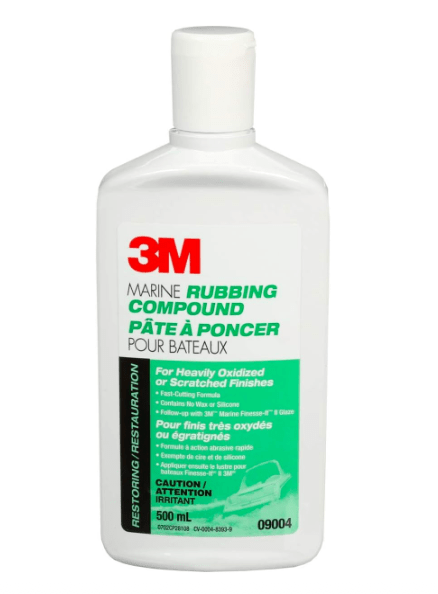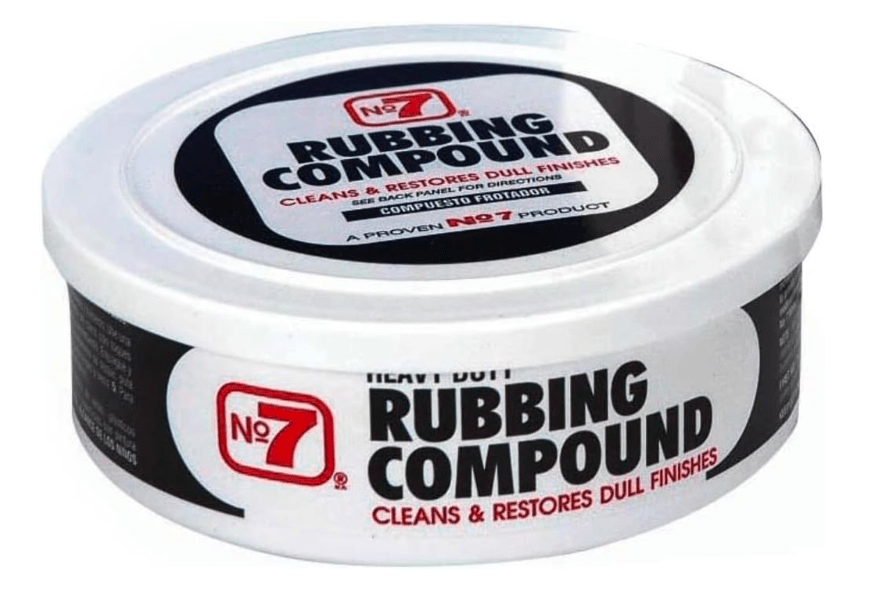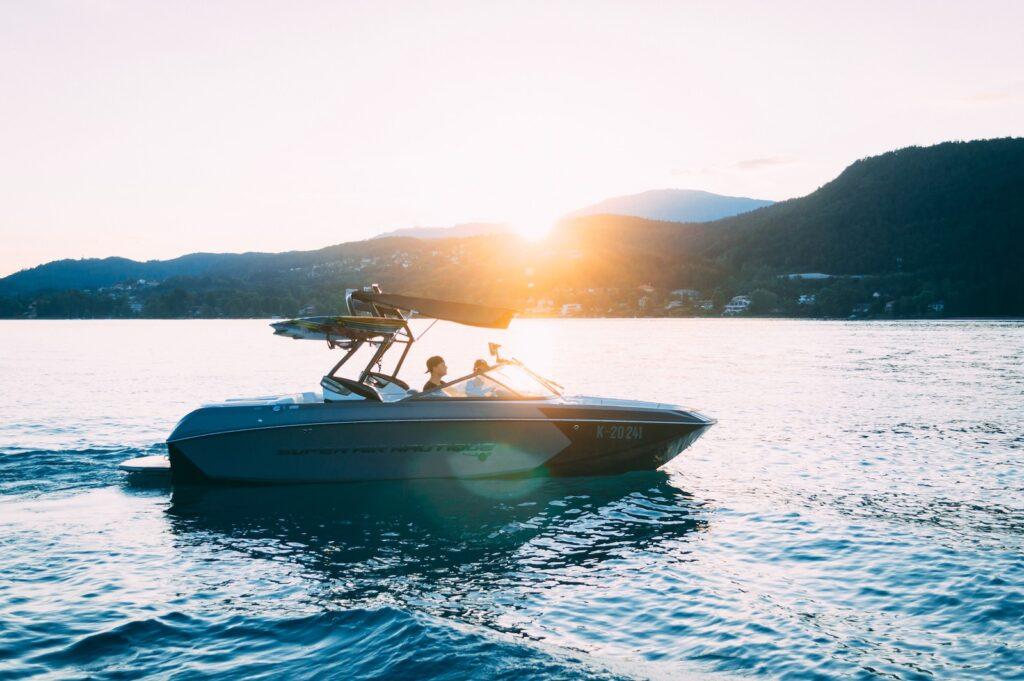Best Rubbing Compound for Boats
Picking the best rubbing compound for boat can be like trying to find a particular fish in the middle of the ocean. Every brand claims to be the best, leaving you scratching your head. So, let me help you navigate these murky waters. Today, we’re diving into the world of boat rubbing compounds, breaking down the best options on the market, and what makes them the cream of the crop.
Best Rubbing Compound for Boats
When it comes to the best liquid rubbing compounds for boats, a few names tend to bob up to the surface. Here are our top choices:
1. 3M Marine Rubbing Compound

3M Marine Rubbing Compound is a liquid rubbing compound designed specifically for fiberglass boats. It is formulated with fine abrasives that quickly remove dirt, oxidation, and surface defects. This rubbing compound is safe to use on all types of boat finishes, including clear coats.
When using 3M Marine Rubbing Compound, a little goes a long way. It’s designed to eliminate medium to heavy oxidation, chalking, water spots, and scratches. Plus, it saves you time because you can use it on both light and dark-colored boats.
2. Meguiar’s M6732 Marine/RV One Step Compound

Meguiar’s Marine One-Step Compound is perfect if you’re all about convenience. Its dual purpose as a cleaner and a wax eliminates the need for two separate products. Besides, its non-abrasive formula ensures you won’t be damaging your boat while trying to maintain it. Meguiar’s Marine One-Step Compound is a big hit because it acts as both a cleaner and a wax. It’s a time-saver that doesn’t skimp on quality.
3. STAR BRITE Liquid Rubbing Compound

Star Brite Liquid Rubbing Compound is a liquid rubbing compound designed for fiberglass and painted surfaces. It is formulated with mild abrasives that quickly remove oxidation, scratches, and imperfections. This rubbing compound is safe to use on all types of boat finishes, including clear coats.
4. No.7 Heavy Duty Rubbing Compound

5. STAR BRITE Paste Rubbing Compound

Types of Rubbing Compound
The two main types of rubbing compound are liquid and paste. Liquid rubbing compounds are applied using a soft cloth and are best for light oxidation and scratches.
- Gritty Compounds: Have a gritty texture, similar to sandpaper. They’re usually used for heavily oxidized or scratched surfaces. They work by shaving off a tiny layer from the surface, which levels the surface and removes scratches.
- Polishing Compounds: Gentler and finer than the gritty compounds. They are typically used to remove light scratches and minor oxidation. They also help restore the gloss and shine to the boat surface.
- Buffing Compounds: Buffing compounds are used as a final step in the restoration process. They’re designed to buff the surface to a high gloss finish after the polishing process.
- One-Step Compounds: These compounds are a blend of cleaning, polishing, and waxing compounds. They are ideal for those who want a quick and easy solution for minor to moderate surface defects.
- Professional Grade Compounds: Typically used by professional detailers and require a machine buffer for application. They offer a high level of shine and restoration but can be damaging if not used correctly.
- Eco-Friendly Compounds: As the name suggests, these compounds are made with environmentally friendly ingredients. They are usually biodegradable and free from harmful chemicals.
Paste rubbing compounds are more abrasive and should be used for more serious damages.
Liquid Rubbing Compounds
A liquid rubbing compound is a liquid product used to restore the shine and luster to dull or scratched surfaces. It is typically applied to paint, plastic, and metal surfaces to remove oxidation, scratches, dirt, and other imperfections. The liquid rubbing compound is used in combination with a polishing cloth or buffer to achieve the desired results. It is especially useful for restoring the appearance of older cars and boats.
3M Marine Rubbing Compound
3M Marine Rubbing Compound is a liquid rubbing compound designed specifically for fiberglass boats. It is formulated with fine abrasives that quickly remove dirt, oxidation, and surface defects. This rubbing compound is safe to use on all types of boat finishes, including clear coats.
Meguiar’s Marine/RV Heavy Duty Oxidation Remover
Meguiar’s Marine/RV Heavy Duty Oxidation Remover is a liquid rubbing compound designed to remove light to medium oxidation from fiberglass, gel coat, and painted surfaces. It is formulated with mild abrasives that quickly and safely remove oxidation and restore the boat’s original luster.
Star Brite Ultimate Rubbing Compound
Star Brite Ultimate Rubbing Compound is a liquid rubbing compound designed for fiberglass and painted surfaces. It is formulated with mild abrasives that quickly remove oxidation, scratches, and imperfections. This rubbing compound is safe to use on all types of boat finishes, including clear coats.
Paste Rubbing Compounds

Paste rubbing compounds for boats are abrasive products used to remove paint, oxidation, and other surface imperfections from car finishes. They use a combination of grits and polishing agents to safely repair and restore the finish of vehicles. These compounds are typically applied to an applicator pad or cloth and worked into the surface in a circular motion to evenly remove the desired material. Paste rubbing compounds are a great way to remove light scratches and restore a glossy finish.
3M Marine Ultra Performance Paste Wax
3M Marine Ultra Performance Paste Wax is a paste rubbing compound designed specifically for fiberglass boats. It is formulated with fine abrasives that quickly remove dirt, oxidation, and surface defects. This rubbing compound is safe to use on all types of boat finishes, including clear coats.
Star Brite Heavy Duty Rubbing Compound
Star Brite Heavy Duty Rubbing Compound is a paste rubbing compound designed for fiberglass and painted surfaces. It is formulated with heavy-duty abrasives that quickly remove oxidation, scratches, and imperfections. This rubbing compound is safe to use on all types of boat finishes, including clear coats.
Meguiar’s Marine/RV Cleaner Wax
Meguiar’s Marine/RV Cleaner Wax is a paste rubbing compound designed to remove light to medium oxidation from fiberglass, gel coat, and painted surfaces. It is formulated with mild abrasives that quickly and safely remove oxidation and restore the boat’s original luster.
Application Tips
Before applying a rubbing compound, be sure to clean the surface of the boat with a mild detergent or boat soap. Allow the surface to dry completely, then apply the rubbing compound in small sections. Starting with a light pressure, rub the compound in a circular motion until the desired level of shine is achieved.
- Understand Your Boat’s Surface: Before you start applying any product, it’s crucial to understand what kind of surface you’re dealing with. Fiberglass, for instance, is more delicate than metal, and thus requires a less abrasive compound.
- Use the Right Tools: For the best results, consider using a polishing machine or buffer. These tools can provide a more even and thorough application than applying by hand. If you’re doing it by hand, make sure you use a soft, non-abrasive cloth.
- Test Before Full Application: Always test the compound on a small, hidden area first. This will allow you to see if the product is too abrasive or if it’s providing the desired results.
- Follow the Instructions: Each product comes with its own set of instructions. Some may require you to apply the compound in a circular motion, while others may recommend a back-and-forth motion. Following these instructions will ensure that the product works as intended.
- Don’t Rush: When applying a rubbing compound, slow and steady wins the race. Rushing can lead to uneven application and missed spots. Take your time and make sure you cover all areas.
- Clean the Surface First: Make sure your boat is clean before you apply any product. Dust, grime, and other surface contaminants can scratch your boat when mixed with the rubbing compound.
- Protect Yourself: Always wear gloves and eye protection when applying a rubbing compound. Some of these products contain harsh chemicals that can be harmful if they come into contact with your skin or eyes.
For paste rubbing compounds, use a clean, dry cloth and rub the compound in a circular motion. Use a light pressure for light oxidation and a slightly heavier pressure for deeper oxidation.
Once the oxidation has been removed, rinse the surface with clean water. Finally, apply a wax or sealant to protect the boat’s finish.
Factors to Consider
Consider the material of your boat’s surface. Different boats are made from different materials, such as fiberglass, metal, or wood, each requiring a specific type of compound. Fiberglass boats often need a less abrasive compound compared to metal boats.
The condition of your boat’s surface is another crucial factor. If your boat only has minor scratches and oxidation, a mild rubbing compound will be sufficient. For deep scratches, heavy oxidation, and severe dullness, you might need a more powerful, heavy-duty compound.
You should look at the ease of application of the compound. Some compounds can be applied by hand, while others require a buffer or a machine. If you’re a beginner, you might want to opt for a compound that’s easy to apply by hand.
Price is another consideration. While it’s not always the case, generally speaking, higher-priced rubbing compounds are often of better quality. However, it’s important to balance cost with other factors, like the severity of the damage you’re trying to repair.
Advantages of Using Rubbing Compounds

The main advantage of using a rubbing compound is that it can quickly and effectively remove dirt, oxidation, and scratches from the boat’s exterior. This can help restore the boat’s shine and protect it from further damage.
- Restores Shine and Luster: Rubbing compounds effectively remove surface oxidation, stains, and light scratches, bringing back the original shine and gloss of your boat.
- Prepares the Surface: They prepare the boat’s surface for waxing or polishing by creating a smooth and clean base, ensuring a flawless finish.
- Cost-Effective: Instead of investing in professional detailing services, using a rubbing compound can be a more economical choice for maintaining your boat’s appearance.
- Versatility: They can be used on various types of surfaces, including fiberglass, gel coat, painted surfaces, and metals.
- Improves Longevity: Regular use of rubbing compounds can help protect your boat’s surface from the effects of weathering, UV rays, and saltwater, thereby increasing its lifespan.
- Easy to Use: Most rubbing compounds can be easily applied by hand or with a machine, making them suitable for both DIY enthusiasts and professionals.
- Enhances Resale Value: By maintaining your boat’s aesthetics and condition, rubbing compounds indirectly help in maintaining or enhancing its resale value.
Rubbing compounds are also easy to use and can be applied with minimal effort. They can also be used in conjunction with other boat care products, such as waxes and sealants, to further protect and enhance the boat’s finish.
When using a rubbing compound, it is important to follow safety guidelines. Be sure to wear protective gear such as gloves, goggles, and a dust mask when using a rubbing compound. Also, be sure to work in a well-ventilated area and avoid using rubbing compounds in direct sunlight.
How to Store Rubbing Compounds
Always keep the rubbing compound in its original container, as it’s designed to protect the contents from air and light exposure, both of which can degrade the product. The container also typically includes usage instructions and other important information.
Make sure the lid or cap is tightly sealed after each use. Exposure to air can cause the rubbing compound to dry out and become less effective.
Store the rubbing compound in a cool, dry place. Avoid storing it in locations that experience extreme temperature changes, such as a garage or the trunk of your car. High temperatures can cause the compound to separate or become less effective.
If you’re using a cloth or applicator to apply the compound, ensure it’s clean before dipping it into the container. Dirt or other particles can contaminate the rubbing compound and potentially scratch the surfaces you’re trying to clean and restore.
What compound should I use to buff a boat?
You should use a compound specifically designed for buffing boats. It should be a non-abrasive and wax-based compound that contains polymers and other ingredients to help protect the boat’s paint. Make sure to read the instructions carefully and use the compound according to the manufacturer’s instructions.
When choosing a buffer, make sure it is suitable for the material of the boat, such as fiberglass or metal. It is also important to use a buffer with a low speed setting to prevent damage to the boat’s paint. Wear appropriate safety gear such as gloves, face and eye protection, and a dust mask. Be sure to keep the area well ventilated while buffing.
Best rubbing compound for heavy oxidation
Formula
The first thing to consider is the formula of the teak oil. Make sure to choose a teak oil that is specifically formulated for boats. This will ensure that it is designed to penetrate deeply into the wood and provide the best protection and nourishment.
UV Protection
Another thing to consider is whether the teak oil has UV protection. This will help to protect the wood from sun damage and fading, which can be caused by exposure to the sun.
Application
Consider the application of the teak oil. Some teak oils are designed to be applied with a brush, while others are designed to be applied with a sprayer. Choose a teak oil that is easy to apply and will provide the best results for your boat.
Best Teak Oils for Boats in 2023
Now that you know what to look for when choosing the best teak oil for your boat, let’s take a look at some of the top teak oils on the market.

The best rubbing compound for heavy oxidation is a compound containing abrasive materials such as aluminum oxide, silicon carbide, or other grinding agents. This abrasive compound should be applied with a soft cloth or sponge and worked into the oxidation in a circular motion. Be sure to follow the directions on the rubbing compound package for best results.
For heavy oxidation, a rubbing compound with a finer grit may be necessary. This will help to remove deeper oxidation. Be sure to use a clean cloth and use light pressure when applying the compound to avoid further damage to the paint. After the oxidation has been removed, a good wax or sealant should be applied to protect the paint and help to prevent future oxidation.
Cost
The cost of rubbing compounds can vary depending on the type, brand, and size of the product. Rubbing compounds are relatively inexpensive and can be purchased at marine supply stores or online.
Which polishing compound to use on a boat
Choosing the right polishing compound for a boat largely depends on the condition of the boat’s exterior, as well as the desired end result. The key is to understand what each type of compound does and choose accordingly.
You’ll want to start with a more aggressive, high-cut compound. These are designed to remove significant surface material and are great for restoring faded or heavily weathered surfaces. A product like 3M’s Marine Restorer & Wax is a good example of a high-cut compound suitable for heavily oxidized boats.
If your boat’s exterior has minor oxidation or light scratches, a medium-cut compound would be more suitable. These compounds are less aggressive and are excellent for smoothing out minor imperfections and restoring shine. An example of a medium-cut compound is Star brite’s Premium Medium Polish.
For regular maintenance and light polishing, a low-cut or finishing compound would be ideal. These products are designed to remove minor blemishes and enhance the boat’s shine without removing a significant amount of surface material. Meguiar’s Marine/RV Pure Wax is an example of a low-cut polishing compound that’s great for regular use.
TIP: Before applying a rubbing compound, be sure to clean the surface of the boat with a mild detergent or boat soap. Allo the surface to dry completely, then apply the rubbing compound in small sections. Starting with a light pressure, rub the compound in a circular motion until the desired level of shine is achieved.
For paste rubbing compounds, use a clean, dry cloth and rub the compound in a circular motion. Use a light pressure for light oxidation and a slightly heavier pressure for deeper oxidation.
Once the oxidation has been removed, rinse the surface with clean water. Finally, apply a wax or sealant to protect the boat’s finish.
FAQs
What is the best rubbing compound for boats?
The best rubbing compound for boats depends on the type of boat and its exterior surface. Generally, liquid rubbing compounds are best for light oxidation and scratches, while paste rubbing compounds are better for more serious damages. Be sure to consider the type of boat and its exterior surface when selecting a rubbing compound.
How do you apply rubbing compound?
For paste rubbing compounds, use a clean, dry cloth and rub the compound in a circular motion. Use a light pressure for light oxidation and a slightly heavier pressure for deeper oxidation.
Once the oxidation has been removed, rinse the surface with clean water. Finally, apply a wax or sealant to protect the boat’s finish.
Do rubbing compounds damage boats?
Rubbing compounds are generally safe to use on boats. However, it is important to follow safety guidelines and use the rubbing compound according to the manufacturer’s instructions. Be sure to wear protective gear such as gloves, goggles, and a dust mask when using a rubbing compound. Also, be sure to work in a well-ventilated area and avoid using rubbing compounds in direct sunlight.
Conclusion
When it comes to maintaining the exterior of a boat, the best rubbing compound for boats can make a significant difference. There are two main types of rubbing compound: liquid and paste. Liquid rubbing compounds are best for light oxidation and scratches, while paste rubbing compounds are better for more serious damages. Be sure to consider the type of boat and its exterior surface when selecting a rubbing compound. Rubbing compounds are easy to use and can help restore the boat’s shine and protect it from further damage.
